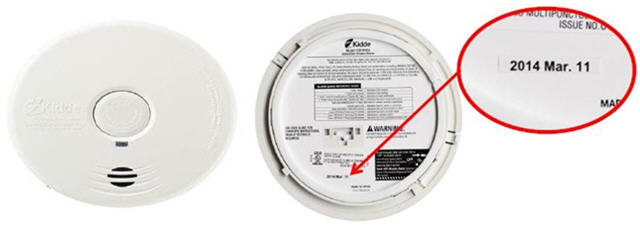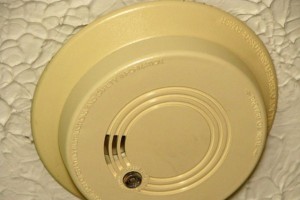Smoke detectors are a critical piece of safety equipment in our homes but we have the tendency to ignore them. During inspections, I find inoperative smoke detectors or other deficiencies in fire protection equipment in about 50% of existing construction homes.
One of the most common deficiencies are smoke detectors that are too old. The National Fire Protection Association (NFPA) recommends replacing your smoke detectors every 10 years or 87,000 hours.

The reason for this recommendation is your smoke detector loses sensitivity over time. Your detector may test just fine but the test button just verifies the electronics are working.
Every detector is required to have its date of manufacture printed on it. It is a fairly simple matter to remove the detector and look at the date.
 If your smoke detector has turned yellow, then there is no need to look at the date. The plastic used to produce the detector contains Brominated Flame Retardants (BFR). These compounds yellow with age as they are exposed to ultraviolet light. If your smoke detector has turned a nice yellow or yellowish brown, it is well past time to replace the unit.
If your smoke detector has turned yellow, then there is no need to look at the date. The plastic used to produce the detector contains Brominated Flame Retardants (BFR). These compounds yellow with age as they are exposed to ultraviolet light. If your smoke detector has turned a nice yellow or yellowish brown, it is well past time to replace the unit.
The NFPA statistics on fire safety and operating smoke detectors are sobering.
- Three of every five home fire deaths resulted from fires in homes with no smoke alarms (38%) or no working smoke alarms (21%).
- The death rate per 100 reported home fires was more than twice as high in homes that did not have any working smoke alarms compared to the rate in homes with working smoke alarms (1.18 deaths vs. 0.53 deaths per 100 fires).
- In fires in which the smoke alarms were present but did not operate, almost half (46%) of the smoke alarms had missing or disconnected batteries.
- Dead batteries caused one-quarter (24%) of the smoke alarm failures.
https://www.nfpa.org/News-and-Research/Data-research-and-tools/Detection-and-Signaling/Smoke-Alarms-in-US-Home-Fires

Recent Comments